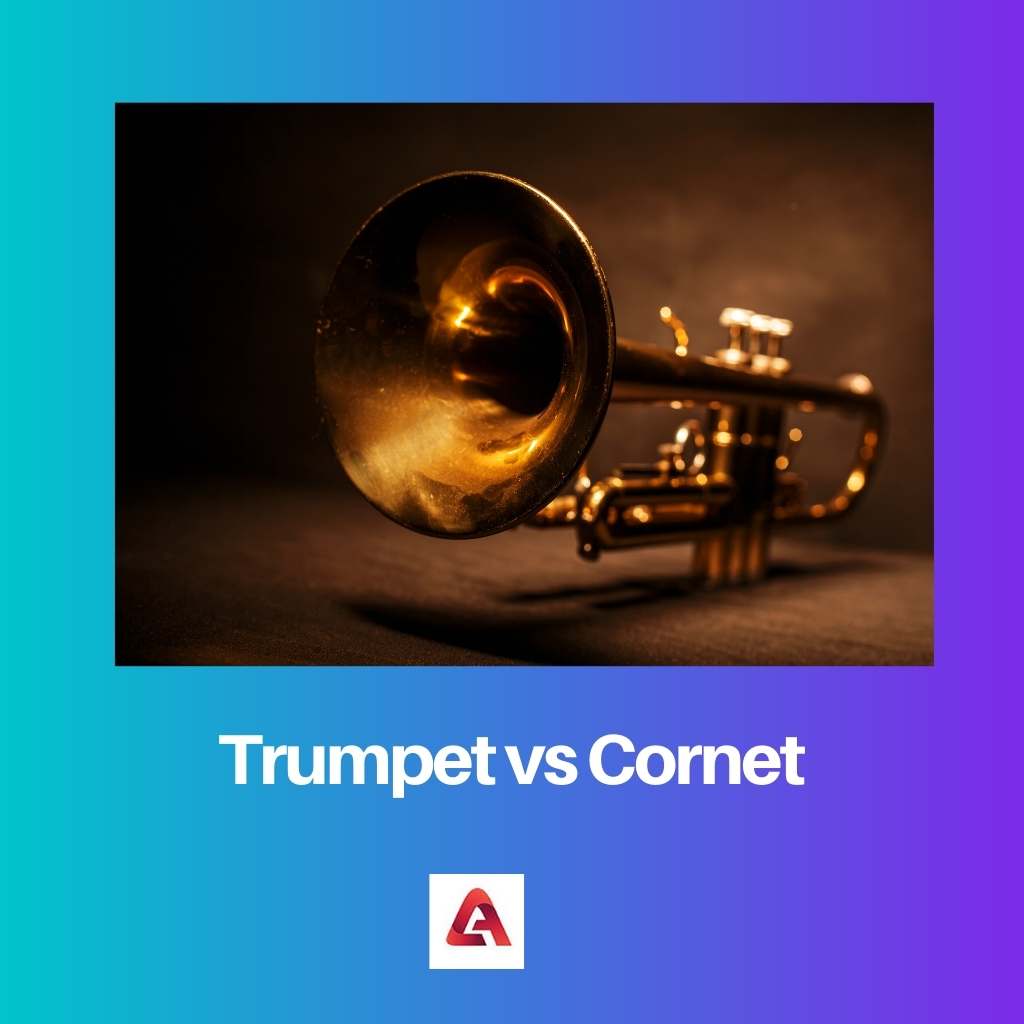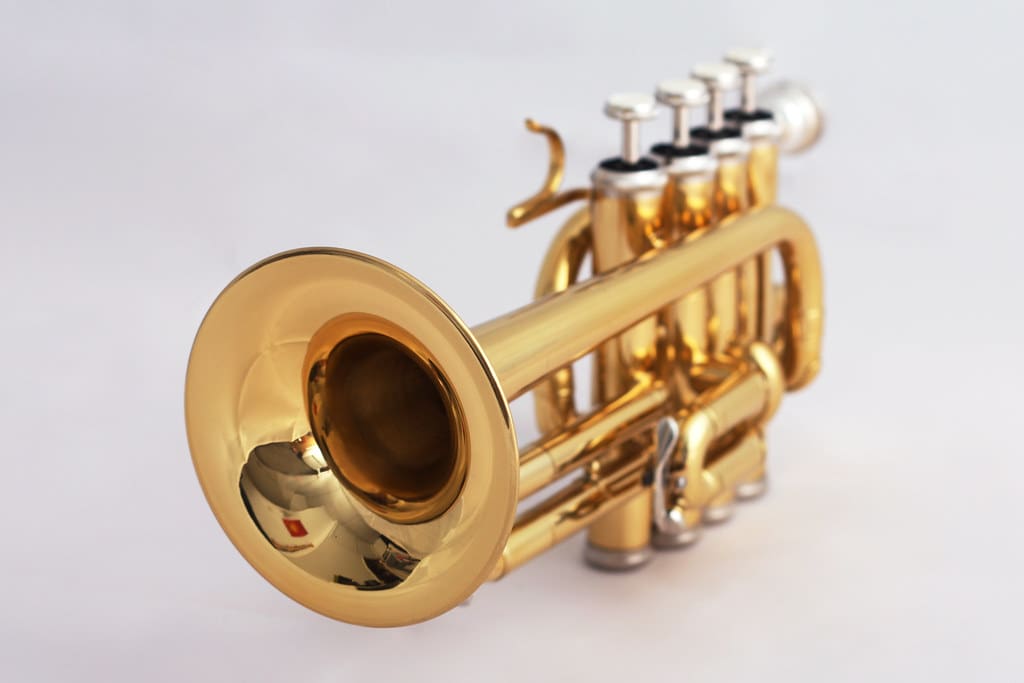Horns have been in use for a long time now for a variety of reasons. Historically, they were made using clay, wood, and even human bones sometimes.
However, they evolved and were made into distinct instruments that fall under the category of ‘brass’. A trumpet and cornet are two brass instruments that look quite similar but have major differences between them.
Key Takeaways
- Trumpets have a cylindrical bore, producing a bright, powerful sound, whereas cornets have a conical bore, resulting in a softer, mellower tone.
- Trumpets are larger and longer than cornets, which makes them more suitable for orchestral music.
- Cornets are more prevalent in brass bands, while trumpets dominate jazz and classical music.
Trumpet vs Cornet
A trumpet is a brass instrument long and has a more cylindrical bore, giving it a brighter and more powerful sound. Its mouthpiece also has a narrower and deeper cup. A cornet is a brass instrument that has a slightly shorter length and a more conical bore, resulting in a warmer and mellower tone.

A trumpet is widely used in jazz and classical compositions. It is a brass wind musical instrument that is played by the mouth.
It has a cup on its rim, against which lip vibrations produce a certain frequency, resulting in a bright sound. The most common key for this instrument is B-flat.
A cornet is widely used in symphony orchestras and brass bands. It looks similar to a trumpet but has a rounder inner chamber, producing a relatively mellow sound.
A mouthpiece is placed at the farther side of a shank, through which wind is blown. Like trumpets, the most common key for this instrument is B-flat.
Comparison Table
| Parameters of Comparison | Trumpet | Cornet |
|---|---|---|
| History | The instrument was developed in the 15th century. | The instrument was developed in the early 19th century. |
| Inventor | It was invented by Anton Weidinger. | It was invented by Jean Asté. |
| Sound | It has a vivid buzzing sound that may seem piercing. | It has a mellow and relatively softer sound. |
| Bore | It has a cylindrical inner chamber. | It has a conical inner chamber. |
| Size | It is relatively larger in size. | It is smaller than a trumpet. |
| Body | Its body has one complete turn in an oblong shape. | Its body has two complete turns. |
| Mouthpiece | It has a cup mouthpiece in the shape of a bowl. | It has a V-shaped mouthpiece. |
| Valves | The valves cover half of the entire instrument. | The valves cover two-thirds of the entire instrument. |
| Popularity | It is very popular across the world. | It is not as popular as the former. |
What is Trumpet?
Trumpets come in several types, from the piccolo trumpet to the bass trumpet. Each has its own features. Overall, these versions have a similar tone, sound quality, and shape.
A trumpet has an oblong-looking shank that has one complete turn. At the end of a shank is a mouthpiece through which wind is blown. It also has valves that decide the pitch of the sound.
The instrument’s conical inner chamber gives a vivid, bright, and piercing tone. Most trumpets play in the B-flat key.
However, the pitch can be transposed by the player to suit different compositions. Trumpets are mostly used in jazz ensembles, orchestras, as well as concert bands. They are even used widely today in pop music.
These instruments were supposedly developed in 1500 BC. They were found in the Egyptian King Tutankhamun’s grave. Other places such as China and Scandinavia, are known to use trumpets in the same era.
Later, improvements were made to its design in the late Middle Ages and Renaissance period.
Many modern musicians play versions of these ancient trumpets. Trumpeters in Germany and the UK who play Baroque music incorporate them in their ensembles. Most major composers make use of them in classical music for a romantic tone.

What is Cornet?
A cornet is another brass instrument that looks very much like the trumpet. However, it has a conical inner chamber that gives out a mellow and softer buzzing sound. Its body has two complete turns and is smaller in size.
However, like trumpets, these come in many variations that have different keys. The most common key for this instrument is B-flat.
The instrument has a narrow V-shaped mouthpiece attached to its rim, through which wind is blown. It has valves covering two-thirds of its body, which allow a player to change the pitch of the sound.
The shank is narrower and shorter as compared to trumpets, but long-model cornets are almost the same size.
Cornets are known to be developed in France in the 1820s. Since then, its use has spread to other countries, and several improvements have been made to its original design.
The mellow buzzing sound allows players to use it mostly in ensembles, unlike trumpets, which are played solo as well.
The name of the instrument is derived from the Latin word ‘Cornu’, which refers to horns. This term was also adopted by the Romans and Etruscans. Then, cornets were only post horns that were used on battlefields, in the same way as bugles.
Main Differences Between Trumpet and Cornet
- Trumpets were developed in the 15th Century, whereas Cornets were developed in the 19th Century.
- Trumpets were invented by Anton Weidinger, whereas Jean Asté invented cornets.
- Trumpets have a vivid buzzing sound which may seem piercing, whereas cornets have a mellow and relatively softer sound.
- Trumpets have a cylindrical inner chamber, whereas cornets have a conical inner chamber.
- Trumpets are large in size, whereas cornets are relatively smaller.
- A trumpet has one complete oblong-shaped turn, whereas a cornet has two complete turns.
- Trumpets have a cup mouthpiece, whereas cornets have a V-shaped mouthpiece.
- The valves of a trumpet cover half of the entire instrument, whereas that of a cornet covers two-thirds of its body.
- Trumpets are very popular across the world, whereas cornets are not as popular.

- https://iopscience.iop.org/article/10.1088/0957-0233/13/5/313/meta
- https://search.proquest.com/openview/f92c2032c9f0ba54c0df4c21d6e65a0e/1?pq-origsite=gscholar&cbl=18750&diss=y

The comparison between the trumpet and cornet is both informative and enlightening. Understanding the distinctions between these instruments enhances the appreciation of their unique musical roles.
The historical background and development of trumpets and cornets are quite intriguing. It’s incredible to see how these instruments have evolved and spread across different musical traditions.
Absolutely. Exploring the historical roots of these instruments sheds light on their cultural significance and evolution throughout different periods.
I completely agree. The historical context adds a fascinating layer of understanding to these instruments and their roles in various music genres.
The historical context for both the trumpet and cornet is incredibly rich and spans various cultures and periods. This article provides a comprehensive overview of the evolution and significance of these instruments.
The comparison table provides a clear and concise overview of the key differences between trumpets and cornets. It’s a great way to understand their distinctions in detail.
Absolutely, having a structured comparison makes it easier to grasp the unique features and applications of each instrument.
The differences in the bore and size of the trumpet and cornet play a significant role in determining their respective tones. This is a very intriguing comparison between the two instruments.
The differences in the inner chamber, mouthpiece, and body of the trumpet and cornet have a direct impact on the quality and character of their respective sounds. Understanding these details is essential for musicians and enthusiasts alike.
I couldn’t agree more. It’s the nuanced differences in design and construction that make each instrument suitable for particular musical styles and settings.
Absolutely. This detailed comparison offers valuable insights into the technical aspects that contribute to the unique tonal qualities of trumpets and cornets.
Both trumpets and cornets have a fascinating origin and history. It’s interesting to note the differences in how they were developed and the sounds they produce.
Absolutely, it’s incredible how the design and shape of these instruments have evolved over time to give them their distinct sounds.
It’s fascinating to see how the type of music, whether jazz, orchestral, or brass bands, influences the choice between using a trumpet or cornet. The historical context of their popularity is equally fascinating.